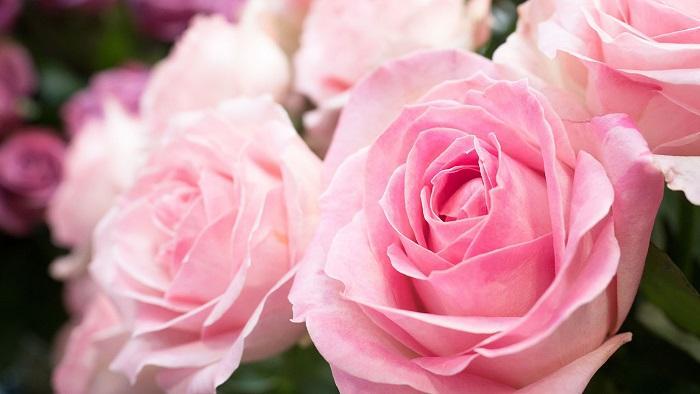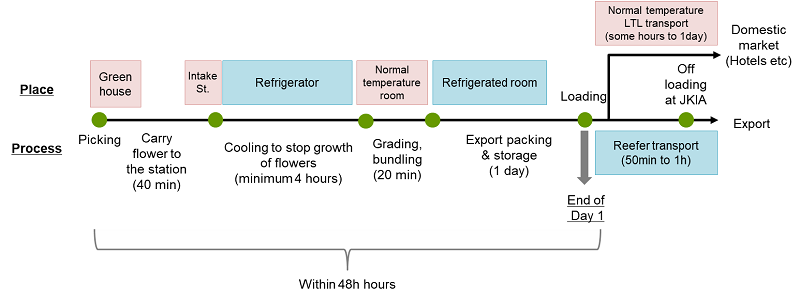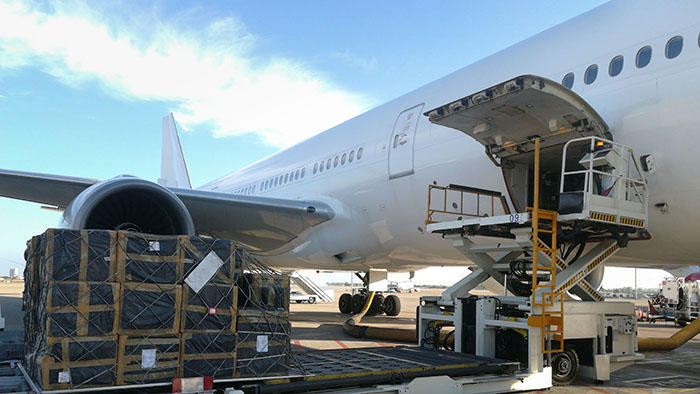Cold chain development for the flower exports in East Africa
September 10, 2020

It may not be commonly known that Japan imports cut flowers from East Africa by air. Cut flowers are sensitive in temperature and need careful temperature control; therefore, it is necessary to have the established cold chain to supply cut flowers from farms in far East Africa to the world. Despite the hardship caused by COVID-19, the Kenyan flower industry and the entire flower supply chain have been struggling to supply quality cut flowers. This article introduces the cold chain development status in East Africa that has made the cut flower exports successful.
The world-famous flower wholesale market, Royal Floral Holland (RFH) in the Netherlands, handles trades of flowers from all over the world, and quite a few flowers from East Africa are traded in this market. Actually, East Africa is famous for cut flower exports. In 2018, Kenya exported US$ 575 million and had a 6.4 % of the global market share (raked at 4th) after Netherlands, Colombia, and Ecuador. Moreover, Ethiopia exported US$ 230.7 million with a share of 2.6% (raked at 5th)1. On the demand side, for example, Japan imported 809 tons of roses from Kenya and 344 tons from Ethiopia, respectively, in 2019, and Kenya is the largest trade partner for Japan in rose imports2.
1.http://www.worldstopexports.com/flower-bouquet-exports-country/
2.International Trade Center Statistics (figures for HS code 060311)
Quality of freshness management determines the value of cut flowers. Freshness control starts at farms in East Africa and continues until flowers are put in an auction. Throughout its journey, keeping temperature constant is important. It is critical to minimize the change even in cold temperature, in other words, to establish the seamless cold chain. Seamless cold chain including handling of cut flowers and temporary storage at farms, reefer transportation, and airport facilities have supported the flower industry in East Africa to boost the exports of quality flowers.
As an example of exporting roses from a farm in Kenya, the cold chain starts right after picking up flowers in the farm. Flowers will be shipped to the airport within 48 hours after picking. To minimize deterioration of flowers, temperature control for these 48 hours is important, and refrigerated facilities in the farm keeps the temperature between 2 to 6 degree Celsius throughout all processes.
Roses are left in a refrigerator for some hours to stop its growth. After this cooling period, roses go through grading and bundling processes for shipments. These works are completed in a normal temperature room; therefore, workers need to finish these processes within 20 minutes. To keep roses cool and dry as much as possible, roses are carried to the refrigerated room again for export packing3. Packed roses are stored in the refrigerated room until a reefer truck comes to pick them up. Moreover, the back of the truck can be connected to an exit gate of the refrigerated room without gaps so that packed roses would not be exposed to the outside air. In this way, there is a carefully established temperature management and transportation for exports without temperature change from the packing room to the airport.
3.http://ucce.ucdavis.edu/files/datastore/234-1906.pdf
In Kenya, exporter themselves or 3PL providers arrange reefer transport. Large farms can be producers as well as exporters, and they often have their reefer trucks as assets. On the other hand, small and medium-sized farms often use 3PL providers who provide milk-run collection and reefer transport services. The importance of temperature control is well acknowledged among farms and exporters, and the availability of reefer transport arrangement has helped the success of the Kenyan flower industry.
Figure 1: Cold chain of cut flower exports

Source: interview with a flower grower/exporter in Kenya
Since most flowers are exported with FOB term, exporters handle over their flowers to forwarders at the airport. The largest international airport in Kenya, Jomo Kenyatta International Airport (JKIA) provides forwarders with facilities with cool temperature control measures that make seamless cold chain logistics possible. The airport has equipped with reefer space for 100,000 ton by Kenya Airports Authority, and this space can be managed with the temperature between minus 18 to 2 degree Celsius4. Moreover, the cargo handling area that Kenya Airways possesses has the designated space for exports of 62,969 sq ft(5,850 m2) and reefer room of 7,459.46 sq ft (693 m2). This space can store 100,000 ton (equivalent to 60 pallets) with the temperature of 4 degree Celsius5. Jomo Kenyatta International Airport has received a good reputation for its facilities from neighboring countries. For instance, many fresh products in Tanzania, such as Avocado for exports, are transported to Nairobi by truck, then loaded on an aircraft there to ship by air. Furthermore, the Addis Ababa Bole International Airport in Ethiopia also has strengthened the capacity of a reefer facility to export perishables last year, which would promote flower exports further.
4.Kenya Airports Authority Website (https://www.kaa.go.ke/)
5.https://www.kaa.go.ke/corporate/cargo/cargo-at-jkia/
Although the cold chain development has contributed to expand the flower exports in Kenya, the industry has been seriously hit by COVID-19. Because of the decrease in demand for cut flowers due to lockdown measures all over the world and discontinuity of air transport caused by cancellation of passenger flights, Kenyan growers were compelled to throw away tons of grown flowers, resulting in a loss in revenue. During the cease of shipping flowers, farms had to reduce the number of employees and the use of inputs like fertilizers to survive. Since June, the demand has been catching up, but it is still difficult to recover the original production level due to a shortage of employees, disordered production cycle, which would deteriorate flower quality. Despite very severe situation, Kenyan growers have resumed their production to serve quality Kenyan flowers again6.
6.https://www.floraldaily.com/article/9226375/the-impact-of-covid-19-on-kenyan-flower-industry/

While facilities for exports are well developed, there are still issues in transport for flowers served for the domestic market. For exports, the weight for one order batch shipped from a farm will be more than one ton; therefore, farms can fill a full reefer truck for one batch. On the other hand, clients in the domestic market are hotels and restaurants with smaller volume. Since one batch for reefer transport would be about 200 kg to 500 kg, it is impossible to fill a full load of a refer truck. Therefore, farms use less than load (LTL) truck service without temperature control, which is provided by logistics service providers. Consequently, cut flowers often get damage during transportation and ended up being disposed. LTL with regular trucks in Kenya is prevalent service, but reefer LTL has not been that popular yet. This is because small and medium sized retailers (family-owned retailers) who always need reefer transport often have their own reefer trucks and large retailers usually use 3PL because their shipping volume can always fill full load of reefer trucks. As a result, reefer LTL service might have not been prevalent due to the lack of cargos.
In addition to fresh flowers, Kenya and other East African countries have enjoyed thriving perishable exports, and nowadays products are exported to all over the world. Sensitive high value products (such as mangos, avocados, green beans, green peas, bell peppers etc.) necessitate a seamless domestic cold chain with reefer trucks up to international gateways. Therefore, some countries like Ethiopia have announced to develop the domestic cold chain that contributes to promote exports. Logistics network development with cold chain development has impressively promoted the exports of fresh flowers and other perishables. Recently in Kenya, flower exports by sea has started for the purpose of cost reduction. If the cold chain and transportation modes are further developed, we will have more opportunity to see East African flowers and fresh products in our markets in the near future.